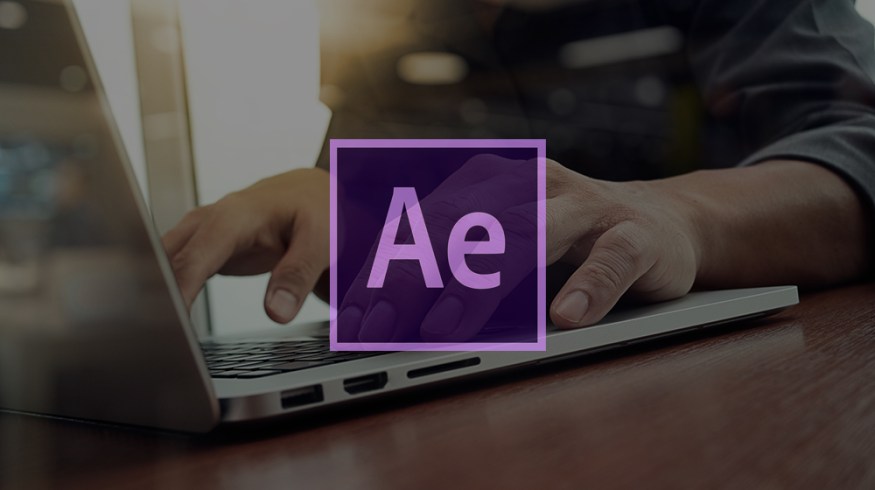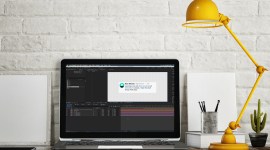
Video Tutorial: Cell Phone & Tablet Screen Replacement in After Effects
In this video tutorial you’ll learn how to create and track a screen replacement in After Effects!

Need to promote a mobile app or game? An explainer video or demo video is a great way to showcase the new app in action.
In the following After Effects video tutorial, you’ll learn how to replace the screen of a cell phone, iPhone, tablet or other mobile device with your own video content. This is ideal for demonstrating user interaction or showing off the design of an app, without having to have talent onscreen manipulating the device.
The screen replacement effect is created by tracking live video using the tools that come packaged with After Effects (no third party filters or plugins required). Highlights of the tutorial include:
- Using the Warp Stabilizer to smooth camera motion
- Using the Perspective Corner Pin Tracker to isolate the device’s screen
- ‘Selling’ the effect by applying screen glow, beveled border and simulated light streaks
This is an intermediate After Effects tutorial and goes through the steps quite quickly. Some previous experience working in AE is suggested.
[color-box color=”gray”]Video Transcript:
This is Evan Abrams for Premium Beat.com and today we’re going to be creating a fake iPhone screen and putting the new graphics into it. It’s not that difficult and these things will go a long way, and I hope you find it useful.
So once you’ve imported your footage into After Effects, go ahead and bring it onto a new composition. And the first thing we’re going to do is take this footage and we’re going to stabilize it. We’re going to use the warp stabilize VFX and this will automatically stabilize shaky footage. The result is going to be smooth motion; we like the smoothness to be at 25%. We like the method to be position scale and rotation, and in the advanced we would like to use detailed analysis and we’d like to set crop less, smooth more to 25. This will process automatically so you can go do something else while it happens.
Now that your footage has been successfully smoothed out, the motion is less jittery and the things are less awkward to work with. So we’re going to take this comp, and we’re going to call it footage stabilized. Now we’re going to drag that onto a new composition and we will do our tracking in here. So I’m just going to block off the part of this comp we’re interested in, so it’ll be from here to about here; set your play head, trim the comp to the work area.
And now instead of using any fancy trackers we’re just going to use the four-point corner pin. I’ll just trim this a little bit more. And we just need to track the four corners of this device and then export that information to a new comp.
So the new comp we’re going to make is going to be 960 x 640, which are the dimensions of that screen. It’s important that you know the dimensions of the screen you’re replacing. So if you don’t know of your specific device you should Google it or measure it with a ruler, but as long as the aspect ratio is correct you should be fine. So we’ll call this screen content, and there we might as well make a place holder, so just make a new solid, perhaps; maybe make it white, maybe make a new solid, make it a little bit darker, put it on top of that, and then we can use something like venetian blinds, set it at ten, 45 degrees, 75 degree angle, just to put a little texture into this thing. So now we have some footage.
So we have stabilized footage; and then stabilized footage No. 2 we’ll call screen tracked. And then here we have our stabilized footage and then we’re going to bring in our screen content above it. Good.
So now we need to actually track these corners. So we’re going to go, track motion, and we’re going to go with a tracker type of perspective corner pin, which will give us these four dots. And now we just need to apply them to the corners. So we move point one up here, point two up here, and then point four and finally point three. And it can be helpful for you to make a note of where these are, because it’s not always easy to know which point is on which corner.
Now let’s go back and make sure they’re all nicely nestled into the corner between the bezel and the screen area. Those all look good. And then we go into the options of the tracker using RGB; we are processing before match, we’re enhancing, and we’re telling it to stop tracking if confidence is below 80%. Hit okay, and then press play to track ahead. And it will do as good a job as it possibly can to track this up. Again, another automated process where if you set it up correctly and your footage is good you shouldn’t have too much of a problem. Okay, that’s done; it’s output a bunch of information.
Now we’re going to edit the target, set it to screen content, hit apply, and then we can have a look at the type of damage that we’ve done here. So I’ll put the eye of this back on, and we’ll see if it’s even remotely close to where we want it. And it looks like it’s been successful. So that’s good; you’ve tracked something on there, but your work is not yet done because there is a lot that needs to be done to get this to look correct. We have to remove that disgusting green border there. We have to continue the glare up onto the screen; there are so many things to do.
So first thing to do is to pre-compose this here; so Cntl-shift-C will pre- compose it, and this is tracked content, because we want to remember that this content is tracked to where it is. And we’ll just change its color here to be blue.
And we’re going to need a few copies of this, so I’m going to duplicate it and one of these we’re just going to call regular content, and it goes above the stack of other content. This one we’ll just have to match its blurriness to match the blur level of what’s around it. So I can use the fast blur to do that, and I think a blurriness of two is enough, just so it matches.
Now the next one under that is going to be a blurred glow, and on this one we’re going to set its opacity to be lower, like a 50, give it a fast blur– even a much higher fast blur of 25, so it starts to glow out on the edges. And depending on how bright your mimicking your screen to be that’ll change that value. So those two are done.
Duplicate that again, put it down here, blurred glow two we’re going to change to a mode of add, because it’s much brighter and (? glow), and press glow level of 50, and transparency is perhaps lower, around ten. So now we’ve set up enough glowing to simulate a glowing screen coming out of this thing. So that’s all good.
Now using blurred glow two we need to create a small border around here, so I’m going to duplicate this, set it below everything, and change its value here to be red. And what I’m going to call this is spillover alpha. And I’m going to use this to define the alpha of the spillover range. And I’ll do that by changing it from add to normal; then we’re going to change its opacity up to 100%. And I’m going to do a fill to it, and that fill goes above the fast blur. And then I’m going to apply a curve to this and that curves I’m going to put on the alpha. And then only to use that to just bang this out so that it is much larger; this will have to be smaller blur. You just have to make sure that it’s not going too far interrupting with things. So we’ll change the blur level down just so it fits in that area, a median zone, just around to cover up the green. So that looks good.
So what we’ll do is we will duplicate the footage stabilized, and we’ll take the spillover alpha and we’ll put both of those up at the top. Footage stabilized we’re going to use the track mat of that alpha thing so that it is only this much that we’re concerned about. And then what we’re going to do is we’re going to use the key light to key out the green, so to select it in there. And then we’re going to go here to the screen mat, change this to hard color, so now there is kind of a glow that’s going to be coming over it. And this is in order to preserve things like the light streaks and the spillover so you can see how this is now starting to bleed over into this piece. And now we’re going to fast blur, about 25; that should do it. And change this from normal to add, and then change its opacity to say 10 or 25 or something around there.
So when we go in and we start editing things in the screen content, let’s say we made this slightly darker by adding in a new solid, make it dark solid, when we go back here we can see these light streaks that are now over top of that, which are helping to really sell this image. So that’s a very important feature, depending upon what is on your screen content.
So going back here we still have a bit of green that we need to deal with. So duplicate this spillover alpha and put this below everything. And we will now rename this to be color fix. And on here we have a bunch of effects that we don’t really care about except that they determine how big this is. So I’m going to pre-compose this, move all the attributes to the new layer, and we’ll call this one color fix. And now what I’m going to do is I’m going to change it to be an adjustment layer and then we can use this adjustment layer to make changes to the green here. What I like to do is use a hue and saturation and set it to colorize; make sure you have the eye turned on. And then you want to just colorize it to match with the area just outside, and it’s sort of like a yellowy brown there, and you know, maybe not as saturated, lightness not exactly the same. But you can use it to help make this fit in better with the piece. So there we go; so far so good.
Now just go into your screen content, maybe punch this up to look a little more noticeable, or maybe have something that seems a little bit more appropriate, but all in, you are now done. You now have a screen that is tracked in there; you have light streaks over it, and it is very convincing. So now you just need to put in content, alter your glows a little bit depending on your scene, and you should be done. Everything’s stuck in well and you’re good to go.
So this has been Evan Abrams for PremiumBeat.com. Hopefully you’ve learned a lot about tracking screens onto devices. One important thing to remember though is to make sure that device is displaying a chromatic green background which is easily done by taking a picture of it with your camera phone, or just downloading the image and then putting it on the screen, and that’s about it. Thank you so much for watching. Stop by at PremiumBeat.com and check out the blog for tips, tricks, and tutorials and After Effects and other applications. And of course come to PremiumBeat for all of your music and sound effects needs. I’m Evan Abrams, follow me on Twitter at ECAbrams and come back next time for more stuff. Thanks for watching, and I’ll see you around the Internet.[/color-box]



